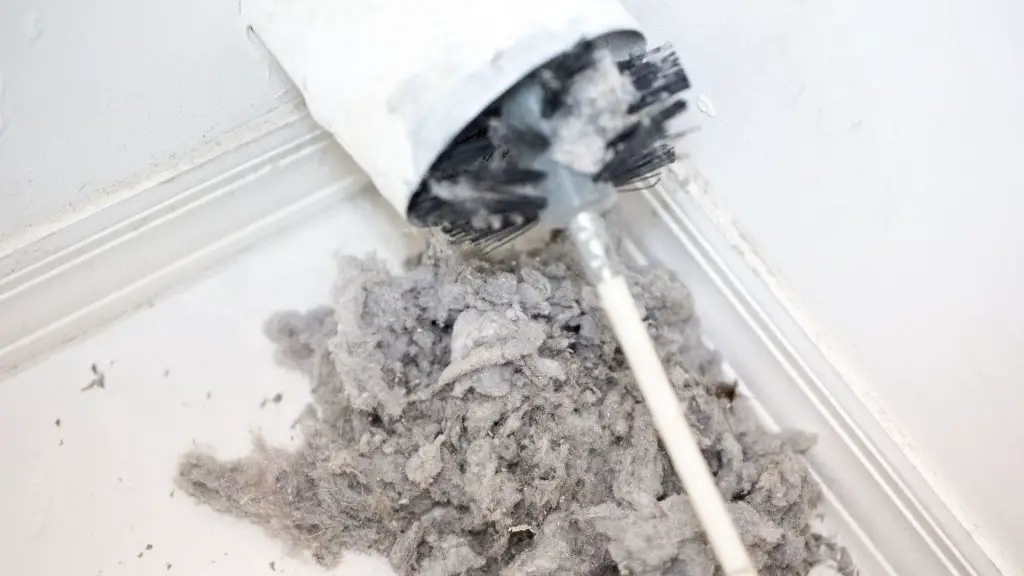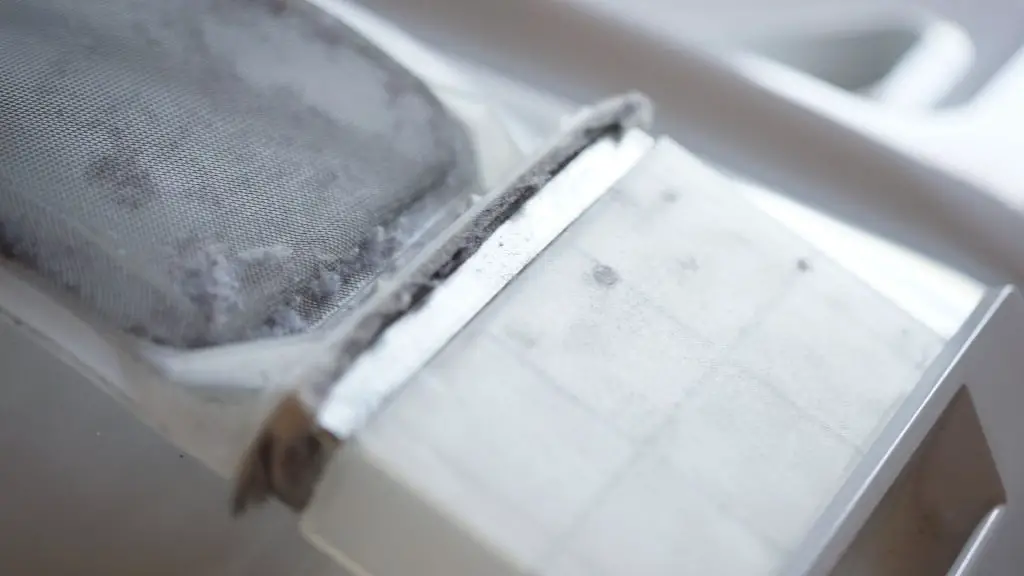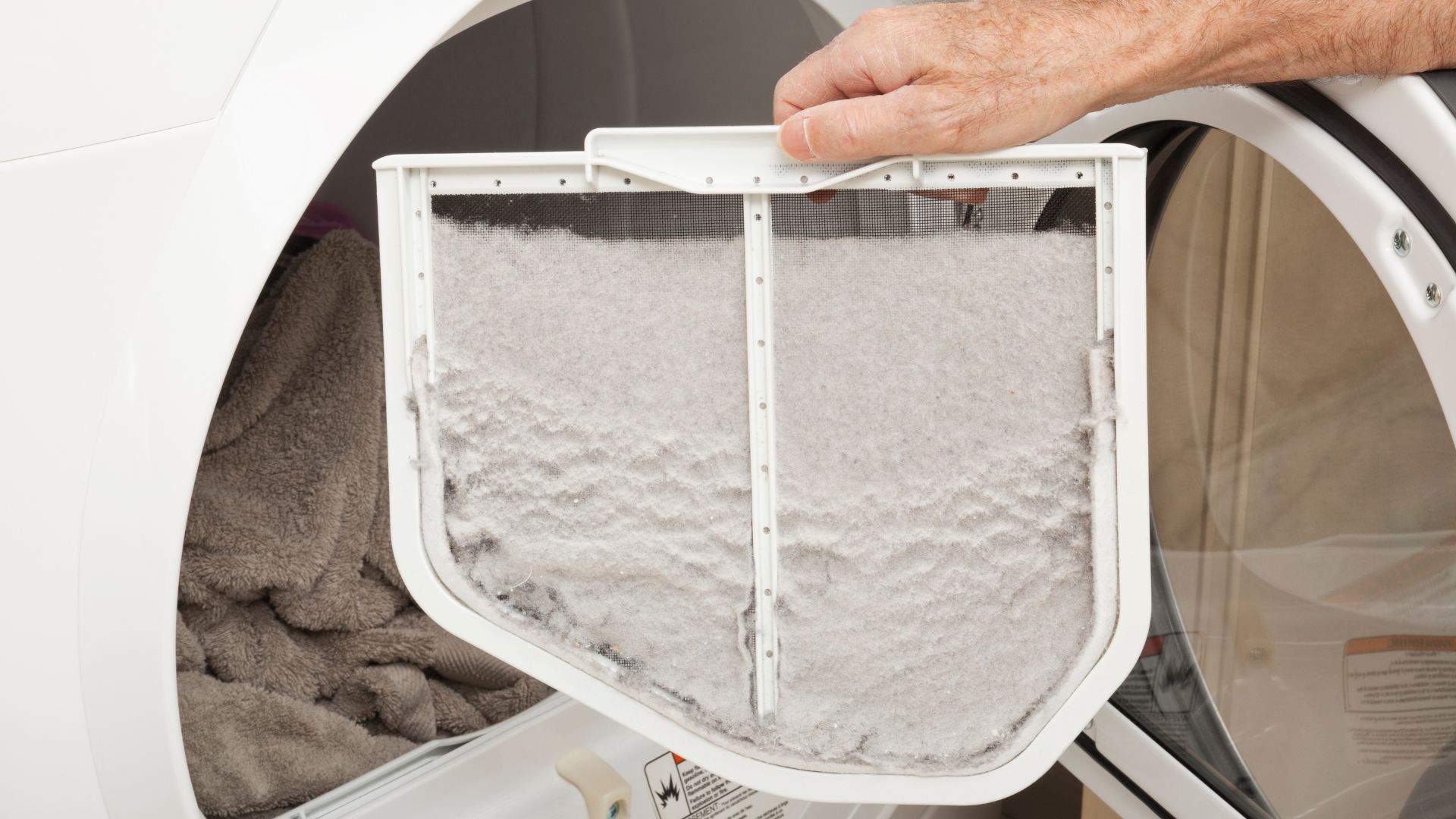These days everyone has a dryer. They are more convenient than hanging your clothes on a line outside. But what happens when lint falls into the dryer?
Lint is not a problem because dryers have a trap that captures the substance. Lint only becomes dangerous when you forget or fail to clean the lint trap. It becomes a fire hazard and can burn your whole house
But is that true? To get a better understanding of the danger lint poses, you should keep the following in mind:
1). Lint falls from fabrics as the dryer spins, heats, and turns your clothing. The clothing releases the lint, which is guided into the trap via an air current. The volume of lint accumulating in the trap depends on the clothing type and the drying frequency.
2). Dryers have vents that act like chimneys. They prevent overheating by guiding excess heat out of the appliance. Contractors connect dryers to vents in the walls and ceilings that lead the hot air out of the house.

3). You have two potential sources of fire in a dryer. First of all, the temperatures in a dryer are high but also safe. The manufacturer designed your dryer to operate efficiently at those temperatures. But the temperatures can exceed safe levels if the vents are obstructed.
According to Daves Appliance, excess lint can limit the airflow in a dryer. Once that happens, the dryer becomes a fire hazard.
This situation is exacerbated by lint, which is a fine, flammable material. Overheating and lint are a dangerous combination.
With that in mind, is lint in the dryer dangerous? Yes, it is. An expert at Penobscot Bay Pilot told a story in which a fire started in her basement because of lint in the trap. She had to call the fire department to stop the fire before it could consume the entire house.
They blamed the fire on a blocked lint trap and a neighbor who obstructed the fireplace. If that doesn’t convince you of the dangers of lint, thousands of residential fires in the US start because of dryers. Of those fires, 34 percent originate from a clogged lint trap.
If you don’t have a trap, and the lint falls directly into the dryer, the appliance has plenty of heat sources capable of igniting the substance. The lint will come into contact with the heating element.
If the thought of a burning dryer doesn’t concern you, I want you to remember that some contractors connect these appliances to vents in the walls and ceiling. This creates a path for the fire in the dryer to follow. It can spread to the rest of the house.
- Learn How to avoid dryer fire?
Where Does All The Lint Come From In The Dryer?

Lint comes from clothing. Fabrics shed fibers that accumulate in dryers because of the heat and tumbling motion.
You can tell that your dryer has lint because the appliance is less efficient. Drying your laundry will take longer than usual because the dryer cannot expel the hot moist air. If your clothes are drying on time, I want you to look for a burning smell.
Some dryer fires start because the excess heat ignites the clothing. You may smell the burning clothes or lint before the fire spreads.
The best step you can take is to clean the dryer vent every six months.
Additional measures include:
- Clean the lint trap every time you do laundry. Don’t wait for the lint to build up.
- If you haven’t cleaned the lint trap in weeks or months, don’t stop at cleaning the trap. Check the back of the dryer. People tend to forget the lint build-up in this area.
- Give the lint trap a thorough cleaning with a brush every few months. Although, it is enough to remove the lint after doing laundry. You don’t have to scrub the filter every day.
- Create a regular cleaning schedule where you hire a professional to check every vent. They will also perform essential maintenance.
- Don’t cover the exterior vents with obstructions.
- Replace the lint filter every time you remove it. Don’t run the dryer if the lint trap is missing.
- Replace damaged lint filters.
- Secure loose lint filters.
- Keep items like bathroom rugs with rubber and plastic components out of the dryer.
- Don’t leave the dryer running when you’re not home. If a fire starts, you can save your home if you act quickly.
How To Remove Lint From Dryer?
- Disconnect the dryer. Don’t tamper with the appliance when it is connected to a power source. Dryers are fire and electrocution hazards. Your insurer may reject your claim if you suffer harm because you tried to clean a dryer without unplugging it.
- Access the back and disconnect the vent by undoing the clamp.
- Reach into the opening and remove the lint. A significant build-up requires a vacuum.
- Use a dryer vent brush to reach as far down the vent as you can. Find a flexible cleaning tool with a decent reach.
- If you have a system that takes the hot air outside, find the exterior vent. This opening is much easier to access. Remove the cover by pulling the screws out. Again, use your tools to reach as far into the vent as possible.
If the screen is clogged, give it a thorough washing. Otherwise, it will continue to obstruct the airflow. If this sounds like a lot of work to you, you’re not wrong. Many homeowners leave this task to a professional.
Professional cleaners have tools that can reach all the lint and debris in your vents. They may also encourage you to install rigid vents that offer additional protection if the lint starts a fire. Rigid metal vents will contain the flames.
You can perform these installations yourself if you want. But a professional knows that the vent’s length affects its efficiency. They can select the correct length for the rigid metal vent.
Watch this video to know more in detail!
Related Post:

